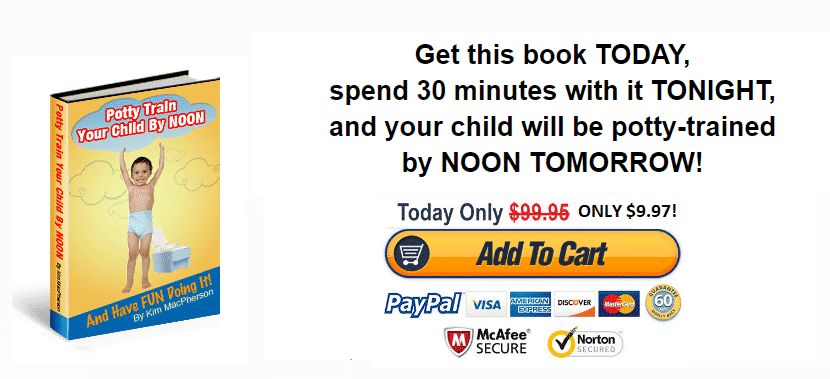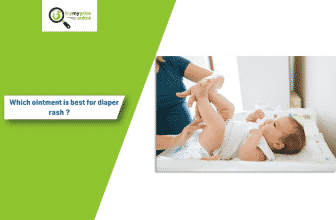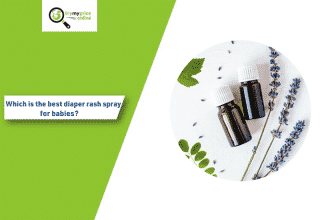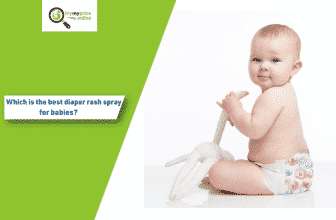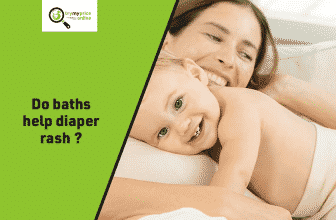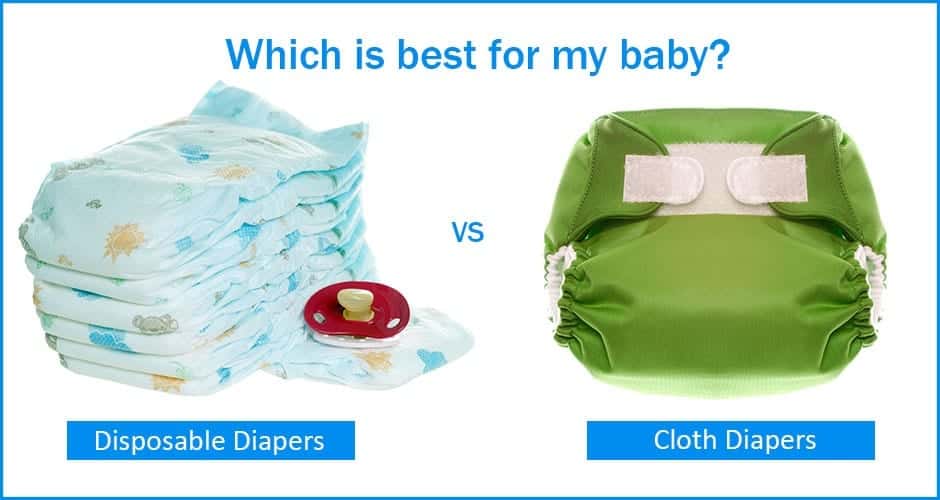
Cloth Diapers Vs. Disposable Diapers: Back when I was little, new parents had just one choice to make about diapers. There was barely any challenge on Cloth diapers Vs. Disposable diapers.
They could use plain white cotton diapers secured with safety pins and covered in plastic pants to protect against leaks or use expensive disposable diapers.
Even though the stripping cloth diapers used to be cheaper, they still gave parents much work to do. This is why working moms with kids in day care centers preferred disposable diapers.
Asides from dads changing diapers today, all parents now have diverse options at their disposal to choose from between cloth diapers vs disposable diapers.
The plain cotton diapers I wore as a baby are still around, but there are also all kinds of fancy “diaper systems” that make cloth diapering more convenient – and also more expensive.
Interestingly, the busy parents can rent their cloth diapers via diaper services. These diaper services take the soiled diapers weekly and deliver fresh supply of neat ones.
Disposable diapers have changed too as the super absorbent polymers can amazingly decrease their bulk. Now, they are made available in a vast variety of patterns and colors.
There are “green” disposable diapers that are chlorine-free, biodegradable, or made with renewable resources for eco-conscious parents.
Even diaper systems blur the line between cloth diapers vs disposable diapers, combining an outer cloth garment with a disposable insert.
The huge number of available choices can be overwhelming – particularly for new parents, who are already juggling a thousand different jobs and getting far too little sleep.
I cannot tell you which kind of diaper is best, but I can do the next best thing: Provide you with a clear, straightforward rundown of the pros and cons of each type, so you can make an informed choice about what works best for you.
What are Disposable Diapers?
The first Disposable diapers were invented in 1948. These diapers have absorbent materials in its inner lining which makes them far more efficient than cloth diapers while still providing similar comfort levels.
They soon took over the market from cloth diapers and are now the most common form of diapers used. The Disposable diapers are used just once since they cannot be cleaned but only discarded.
You must note that non-disposable diapers exist as well.
Types of Disposable Diapers
All disposable diapers have the same basic construction. There is a waterproof outer layer, a soft inner lining that wicks away moisture, and in between, an absorbent core of super-absorbent polymer (SAP) that pulls in and traps moisture.
The Disposable baby diapers have adhesive tabs for fastening, coupled with elastic at the leg and waist to hold them snugly in place. Interestingly, some of them are termed as organic disposable diapers.
It will interest you to note that some of these disposable diapers have extra features that makes them eco-friendlier and healthy for babies while comparison between cloth diapers vs disposable diapers.
Parents who choose the green disposables do this because their babies may likely have allergies or are sensitive to chemicals.
They do this to decrease the baby’s exposure to synthetic chemicals or they may just want to tread carefully on the planet.
Here are some of the most common claims made about disposable diapers and what they mean:
Biodegradable or Compostable
Even if a diaper is made of materials that could break down when exposed to air, water, and sunlight, most disposable diapers end up in dark, airless landfills, where they will remain essentially unchanged for centuries.
Dekor Classic Diaper Pail Biodegradable Refills | 2 Count | Most Economical Refill System | Quick and Simple to Replace | No Preset Bag Size – Use Only What You Need | Exclusive End-of-Liner Marking
Chlorine-Free
Most disposable diapers are bleached with chlorine. This process leaves behind traces of dioxins, which can cause cancer and damage to the immune and reproductive systems.
Studies show that diapers contain only tiny amounts of dioxins, and they don’t contain the most potent and dangerous forms of these chemicals. However, if you think any exposure to dioxins is too much, choosing chlorine-free diapers eliminates the risk.
Happy Little Camper x Hilary Duff Ultra-Absorbent Hypoallergenic Natural Baby Diapers with Bio-Core Blend and Strong Latex and Chlorine-Free Protection, Size 4, 80 Count
Dye and Fragrance-Free
There are babies who are allergic to the dyes and fragrances used in the making of disposable diapers.
These chemicals also serve no useful purpose since adding fragrance does not improve the smell of a dirty diaper.
If you know your baby is allergic to these chemicals – or if you don’t want to wait until a reaction develops to find an outlook for diapers that are free of dyes and fragrances. It is possible to find low-priced brands that are fragrance-free when making comparison between cloth diapers vs disposable diapers.
Gerber Birdseye 3-Ply Prefold Cloth Diapers, White, 10 Count
1 used from $13.88
Hypoallergenic
In theory, a hypoallergenic product is less likely to cause an allergic reaction. Although most diapers do not claim to be hypoallergenic, those who do are not required to submit any evidence for the FDA’s claim.
The ideal way to avoid these allergic reactions from disposable diapers is by simply choosing diapers that are not made with dye and fragrances.
Some other things you need to know about the disposable diapers are:
Disposable Diaper Costs
Disposable baby diapers vary widely in price. The editors estimate that a typical baby uses a total of 6,000 diapers in the first three years of life.
Thus, they calculate the total cost of the disposable diaper to be $1,440 for the value-priced Cuties diapers and $2,880.
The editors note that these price estimates are a bit on the high side. Buying in bulk from a subscription program like Amazon.com can cut prices on most brands by about 20%.
However, they still cost quite a bit more than cloth diapers laundered at home – particularly if you can reuse the cloth diapers for a second child.
Disposable Diaper Accessories
Having a baby in diapers requires more equipment than just the diapers themselves. You need a sturdy diaper pail to hold the dirty diapers and block out unpleasant smells, for starters.
However, these fancy bags make the system expensive – although it costs only $20 to buy, adding in three years’ worth of bags raises the overall cost to around $300.
At the other end of the price spectrum, a diaper pail can be as simple as a regular garbage can with a tight-fitting lid.
If you buy a basic kitchen garbage can and line it with ordinary trash bags, your lifetime cost can be as low as $75.
Convenience
Of course, convenience is the reason most parents choose disposables. But disposable diapers do involve some work – they can approximately double the amount of trash a family has to haul to the curb each week.
But for most parents, that takes a lot less effort than laundering a load of cloth diapers every other day.
Some parents who would prefer to use cloth diapers choose disposables because their babies are in daycare.
Many daycare centers do not allow infant cloth diapers, and in a few places, there are state or local regulations that require them to use disposable baby diapers.
Environmental Concerns
Disposable diapers are widely perceived as an environmental disaster because of the materials used to produce them and the landfill space they take up. In fact, “use cloth diapers” was one of the tips in the classic environment.
However, all these facts come from books and studies that are more than a decade old. More recent studies have cast doubt on whether disposable diapers are worse overall than cloth ones.
One major problem with disposable diapers is that many parents simply wrap up the baby’s poop inside before tossing them in the trash.
This is the main reason the site’s editors consider cloth diapers to be a more eco-friendly choice than disposables.
For parents who use disposable diapers, they say, the responsible thing to do is dump out any solid waste into the toilet before putting the diaper in the trash – which, of course, takes a lot away from the convenience that’s the main perk of using disposable diapers in the first place.
The pros and cons of the disposable diaper are:
- It offers convenience
- It allows for quick changes
- It comes as hypoallergenic
- It is expensive
- It causes skin rashes
- It makes toilet training to be more difficult
Home-Laundered Cloth Diaper
Although disposable diapers remain the most popular type, cloth diapers are having a renaissance, thanks to new designs and accessories that take a lot of the work out of cloth diapering.
More than 60,000 users search google each month for “cloth diapers,” while only 3,600 searches for “disposable diapers.”
In the past, the biggest advantage of cloth diapers was their lower cost, and the biggest drawback was the work involved. This is still true to a large extent, but modern diaper systems have changed the equation somewhat.
Cloth diapers still have clear advantages and disadvantages than disposables, but the differences are less extreme than they used to be.
Types of Cloth Diapers
Shopping for cloth diapers can be bewildering. There are so many different terms – pocket, all-in-one, all-in-two, hybrid – and some of these names can be used interchangeably to make matters more confusing.
Here is a rundown of the major types of cloth diapers, along with their main advantages and disadvantages, to clarify matters. The different types of cloth diapers are:
Prefold
These are the basic cloth diapers I grew up with: a flat rectangle of cloth, usually thicker in the middle.
They are called prefolds to distinguish them from the still older flat diaper, which is seldom seen nowadays. However, despite the name, prefold diapers still require some folding before you can fasten them on the baby.
If you want to buy cloth diapers, the Prefold diapers are versatile and easy to clean and dry, but they’re also bulkier than other types of cloth diapers.
Fitted
A fitted infant cloth diaper is built much like a disposable, with multiple layers of absorbent material, leg and back elastic, and snaps or hook-and-loop tape to hold them in place.
However, unlike disposables, they don’t have a waterproof outer layer, requiring a separate cover.
Most fitted diapers come in multiple sizes, but a few brands have snaps that allow them to adjust to your baby’s growth.
Fitted diapers are more expensive than prefold diapers, but they’re also more absorbent and easier to fasten, and the leg elastic does a good job keeping messes contained.
All-in-one
When it comes to the best cloth diapers 2020, the all-in-one diaper is like a fitted diaper but with a waterproof outer layer built-in, eliminating the need for a separate cover.
This makes them quick and easy to change, and daycare centers often prefer them for this reason.
However, because all their parts are sewn together in a single piece, they take up more room in the washer, which means more laundry loads – and their bulk means that each load takes a long time to dry.
All-in-one diapers are also the most expensive type to use, costing anywhere from $600 to $900 from birth until the baby is potty trained.
A pocket diaper has two parts: an outer shell with elastic legs and snap or tab fasteners and a removable insert.
The shell itself has two layers: a waterproof outer layer and a soft lining with a pocket opening much like a kangaroo’s pouch. The insert, also made of soft cloth, tucks into this pocket, where it funnels moisture away from the baby’s skin.
Another advantage is that you can stuff in a second insert for extra absorbency at night. Pocket diapers are easy to fasten, and they don’t require a separate cover.
However, they are also bulky. Since the pocket get soiled when the diaper is used, they must be washed after every use.
Also, removing the insert can be a messy process. They’re less expensive than all-in-ones but more expensive than hybrid or all-in-two diapers in terms of price.
All-In-Two
Like a pocket diaper, an all-in-two has both a shell and a liner. But the liner simply sits on top of the shell instead of tucking in.
This makes it much easier to remove the liners after use and get a fresh diaper ready to go on the baby.
However, the biggest advantage of all-in-two systems is that most of the time, only the liner gets soiled, so the shell can be reused, which makes for far less laundry.
Also, because you don’t need to change the shell every time, you don’t need to buy as many of them, making the all-in-two much cheaper to use than all-in-one or pocket diapers.
The all-in-twos infant cloth diapers are sold in multiple sizes, which you replace as your baby grows and as one-size models that adjust to fit.
Hybrid
Hybrid diapers are a particular type of all-in-two that can be used with disposable inserts, making them a “hybrid” between a cloth diaper and a disposable.
For many parents, hybrid diapers are the best of both worlds. They can use cloth liners at home for greater absorbency and then switch to disposable liners for their greater convenience when they are on the road or when the baby is at daycare.
Some of the things you need to know about the cloth diapers are:
Cloth Diaper Costs
The cost of cloth diapering depends on the type of diapers you choose. As noted above, prefold diapers are the cheapest type, costing around $2.50 per diaper, with a lifetime cost of about $255.
Modern diaper systems have a much higher initial cost – between $15 and $24 per diaper. However, when you compare lifetime cost of cloth diapers, the difference isn’t nearly as dramatic.
Cloth Diaper Accessories
Just like disposable diapers, the infant cloth diapers require a diaper pail and wipes. Also, some extra accessories can make the process of changing and washing cloth diapers a lot easier.
Cost Considerations
Using a diaper service is far more expensive than laundering your diapers. Most of the diaper services charge around $20 for a week’s supply of the basic prefold diapers. This is about 80 of them for a newborn – plus a diaper pail with a liner and deodorizer.
Some services also include diaper covers and cloth wipes, which can be laundered along with the diapers. However, you must supply your covers to go with the service’s diapers in most cases.
Compared to the newborn disposable diapers, using a diaper service is a toss-up. Disposable diapers cost anywhere from $0.14 apiece for an ultra-basic brand to $0.48 apiece for a high-quality green brand, while diapers from service cost about $0.25 each.
Depending on which brand of diaper you would otherwise be using, a diaper service can be a great value or a poor one.
Convenience
The biggest advantage of using a diaper service is having someone else take care of all the laundry. After a diaper change, all you need to do is dump out the solids and toss the dirty diaper in the pail.
This makes cloth diapering practical for parents who don’t have a washer and dryer at home.
However, one downside of diaper services is that most of them offer only basic prefold diapers. This makes changing your baby a bit more of a hassle since you have to fold the diaper, put it on and secure it, and then add a separate cover.
Another drawback of cloth Diapers versus Disposable Diapers is that most daycare centers don’t allow prefold diapers.
Many daycare services don’t allow cloth diapers, and others accept only the easier-to-use diaper systems. So unless your daycare facility has its diaper service, using one probably isn’t an option.
Environmental and Health Concerns
It is tricky to say how the environmental impact of using a diaper service compares to washing at home because there are so many factors involved.
The actual washing process is likely to be more efficient since many diaper services have special washers and dryers that use far less water and energy than home machines.
Bear in mind that some of these services claim to make use of detergents that are environmentally friendly and free of phosphates, dyes, and perfumes.
On the other hand, some diaper services stress that their diapers are “sanitized” because they’re washed in 160°F water.
Experts say there is no need to wash diapers at this temperature, and the UK Environmental Agency says doing so increases the carbon footprint of cloth diaper use.
Also, using a service means shipping diapers to and from your home in a truck, which uses fuel and creates pollution.
Understand that, the environmental effect of using a diaper service is dependent on the exact service you utilize.
Being farther away from your home makes it less green because of the transportation involved; washing diapers efficiently, by contrast, make it greener.
If you cannot find information about the laundering process on a diaper service’s website, you can call and ask.
Some of the pros and cons of cloth diapers are:
- It is cheaper
- It is environmentally friendly
- It is more absorbent
- It is free of chemicals
- It is designed efficiently
- It is user friendly
- Cloth diapers are messy
- You will have to wash the poppy diapers
- It adds to your laundry time.
Things To Consider When Making Your Choice
Some of the things you can put in mind when making your choice between cloth diapers and disposable diapers are much. When it comes to the cloth diaper vs disposable diaper pros and cons, they nclude:
Absorption and comfort
Since cloth diapers are made from materials like hemp, flannel, bamboo, linen, silk, and even wool and used with human-made eateries like suede and nylon, they can allow the diaper to stay dry.
As for disposable diapers, they are made of polyethylene and some similar plastics. Thus, they provide a better level of absorption.
When it comes to comfort, disposable diapers were found to have heightened genital skin temperature, which could prospectively lead to a decrease in sperms production.
As for cloth diapers, it provides enough space for your baby to move slightly around. It enables air to circulate inside the diaper to cool the skin of your child.
Health effects
The disposable baby diapers have dyes and scents which impart pleasing aromas and colors. However, it uses specific chemicals in its preparation, like dioxin, which is a carcinogen.
While there is no detailed research and evidence that disposable diapers lead to fewer diaper rash incidents, they are absorbent.
If you want to counter rash issues with cloth diapers, you should change the diapers often.
Convenience
The disposable baby diapers are very easy to use, and they come with foolproof sealing techniques that do not take long to learn. However, with your baby in cloth diaper, you will require a much more complex folding technique to change the baby.
Lately, they come with snap buttons or even Velcro strips for closure. Interestingly, they have leakproof bands that stop any wastes from escaping around the child’s legs.
Nevertheless, though cloth diapers are absorbent, you will need to frequently change them than you would if you were using a disposable diaper especially when using the cloth diapers at night.
You can easily throw the soiled disposable diaper away when full; however, you will face the dilemma of carrying the soiled cloth diaper in your bag when traveling.
Wrapping It Up
On a general note on cloth diapers vs disposable diapers, there is no single answer to the question of which is better between cloth diapers vs disposable diapers.
Everything is dependent on what is the most important to you. If price is your topmost priority, then the cloth diaper is the way to go.
While you can save the most on basic prefold diapers, hybrid diapers will be more convenient to use.
However, if your main concern is convenience, then you can go for disposable diapers. Bear in mind that you will have to make and face your baby’s underclothes are the most important of all the parenting choices you will have to make and face.
The reason for this is that these regions are quite sensitive and can suffer from discomforts and rashes if you do not take care of your baby’s excreta efficiently.
Now that you can easily pass your judgment on the best diaper suitable for your little one, you may be interested in reading our next article that gives a detailed outline of the best learning toys for your kids in 2021.




